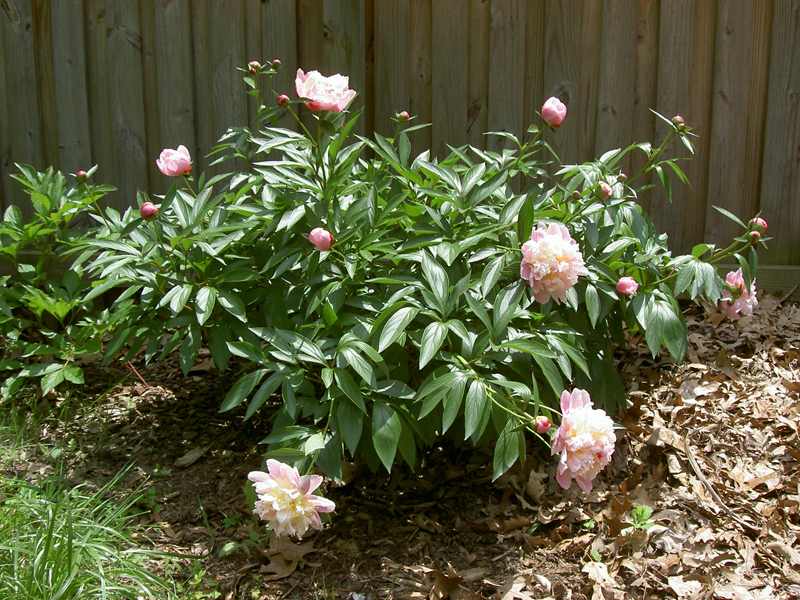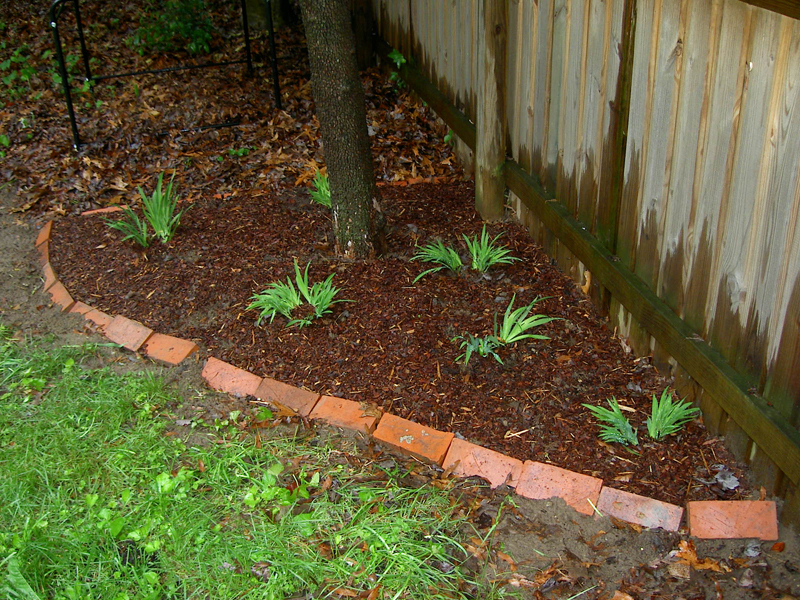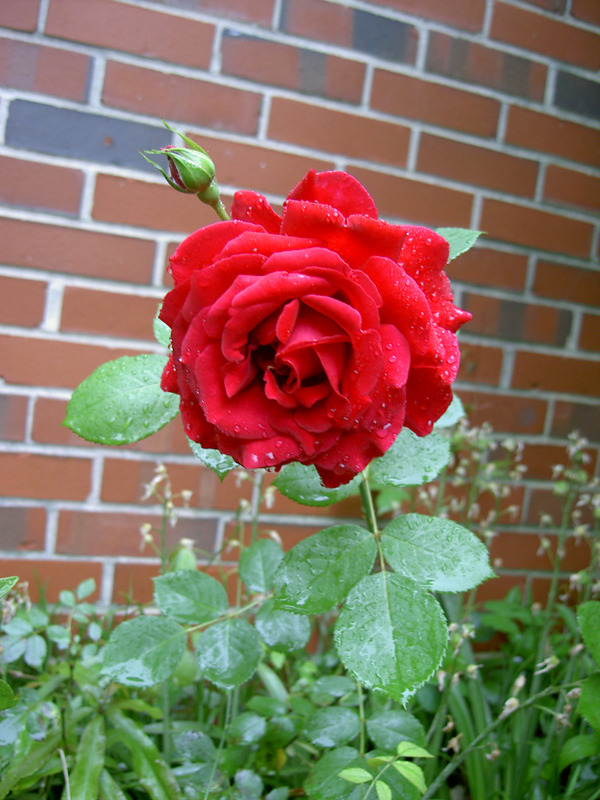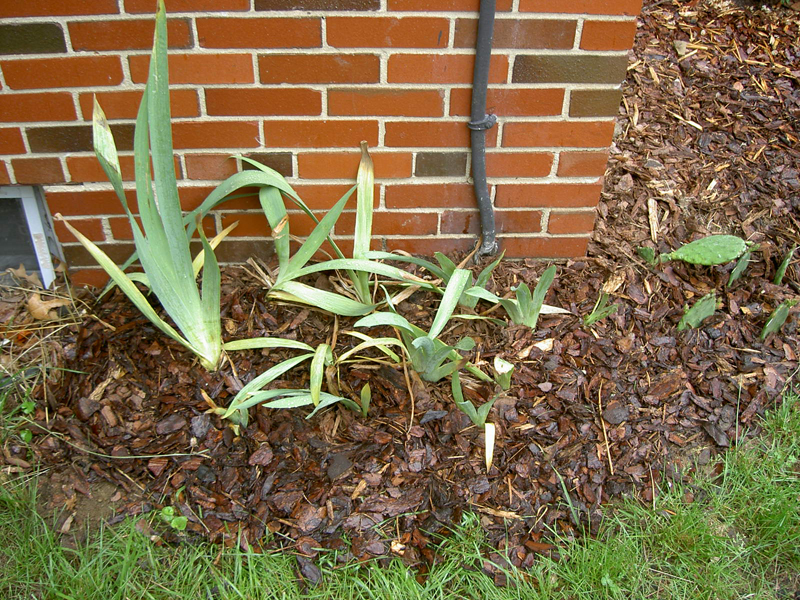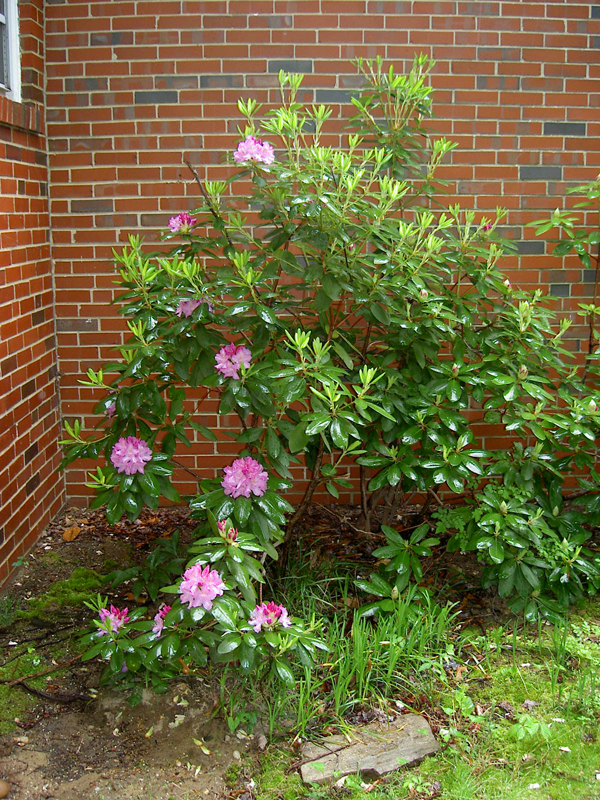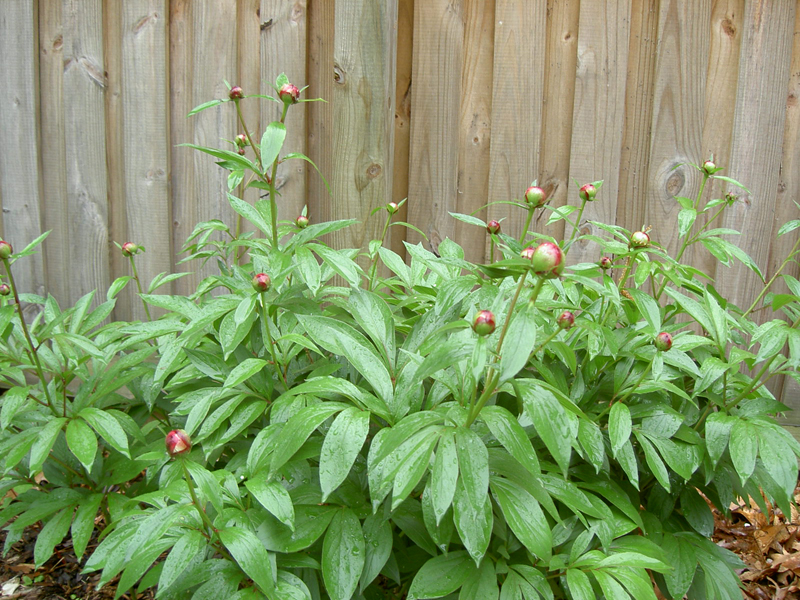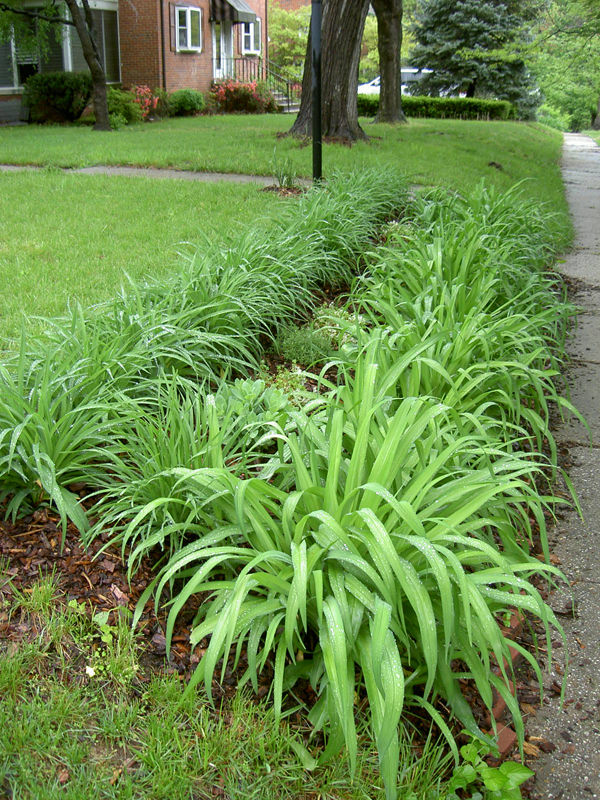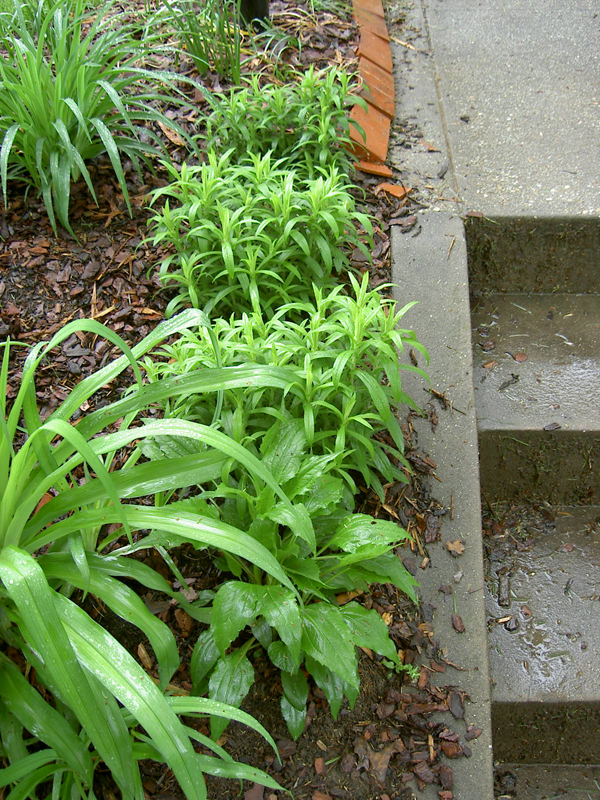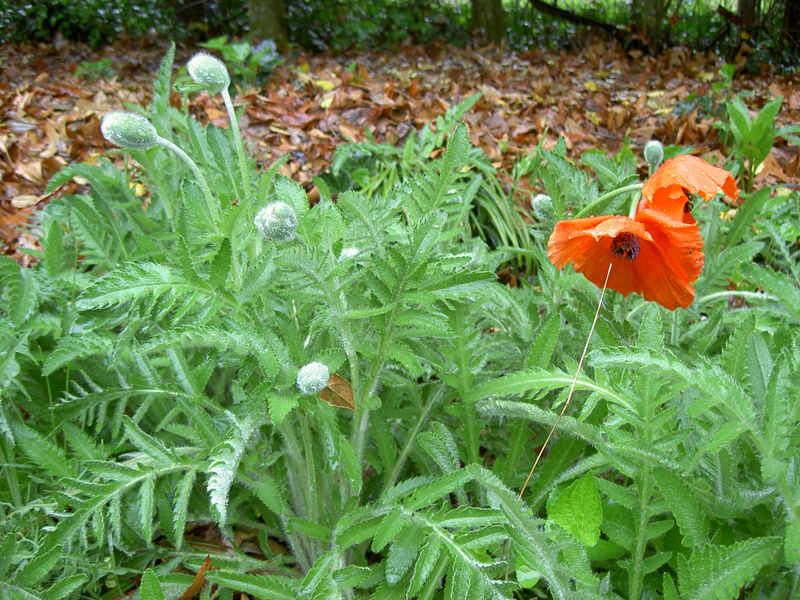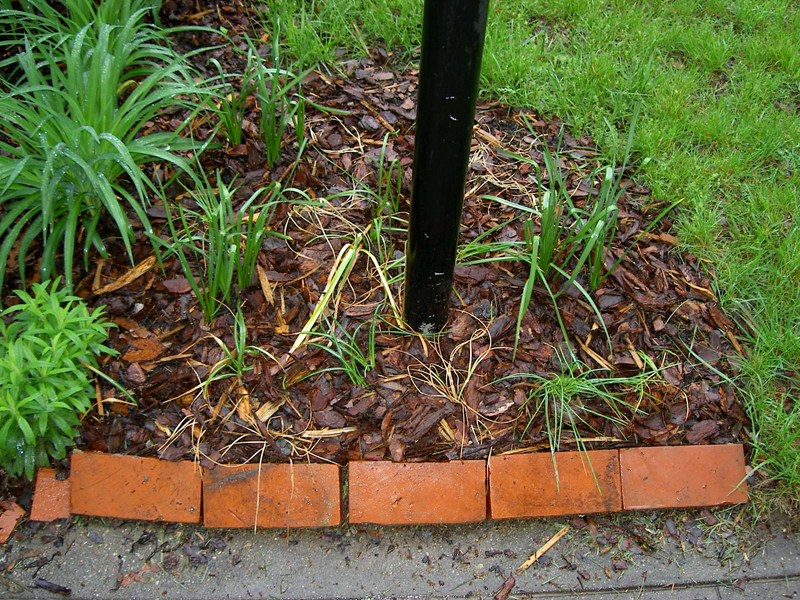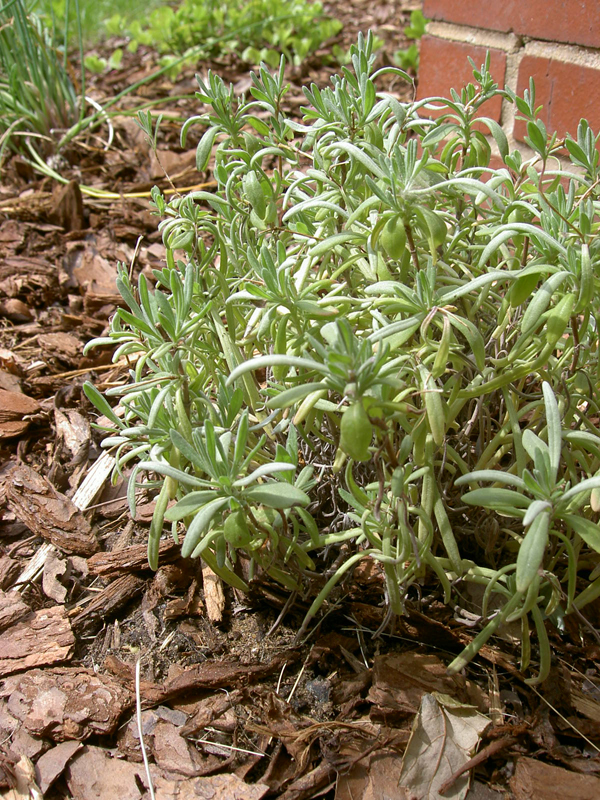
The lavender bursting out in new growth.
My garden notes these days are trending more toward the ‘to be undertaken when I have more time, money and energy’ and away from ‘done done done!’ Happily, growth continues without me: the lavender has taken to its new home and is sending out all kinds of shoots, the first yellow daylily of the summer appeared this morning, and the roses continue to bloom. I haven’t made any more progress on the peony identification front—I emailed Kelway’s asking for help, but haven’t received a response—but I have a new bloom to work with: the transplanted peonies produced a single blossom that opened up today, so I’ll take some photos and see what I can learn.
In terms of the future, I’ve been researching roses and sketching out a plan for preparing a new bed and moving a large old climber to a sunnier roomier spot against the south wall of the addition. The prep appears to entail major soil modification, in the form of compost and topsoil addition, and the purchase of an arbor. We’ll then let the bed sit and get nice and juicy over the summer while I research how to actually move the plant in the fall. This approach has the added bonus of giving me plenty of time to shop for a suitably un-kitschy arbor; I’m fussy with regard to avoiding the country cottage look as much as possible while still filling the house with color and the garden with flowers.
The other plant-shifting project that I have in mind for June involves the creation of a raised border bed in the middle of our front yard. Well, truthfully, at the edge of our front yard—thus the border aspect—but in the middle of the expanse of grass made up by our lawn and our neighbor’s. This bed will serve several purposes: improving the drainage of the front yard, visually defining the edge of the yard, rerouting of the letter carrier, and providing a home for several sun-loving plants that are currently hanging about in less than ideal circumstances. Over the past couple of weeks I’ve acquired three little sprouts that need to go into the ground soon. The rosemary and ‘Italian oregano’ (thyme) will go into the new bed, with plenty of room to grow into nice sizable little shrubs; both should overwinter here without a problem. The summersweet is destined for the existing bed, but its future location is currently occupied by a clump of yellow daylilies and some garlic chives. So, those two plants will be moved to the new bed as well. It’s my hope to put the small fragrant rose bush—the Crimson Glory—into that front bed as well, but I need to do a little more research on soil conditions and wind protection and that sort of thing before I make a final decision about that.
In the meantime, I water them in their little pots and hope for the best!

